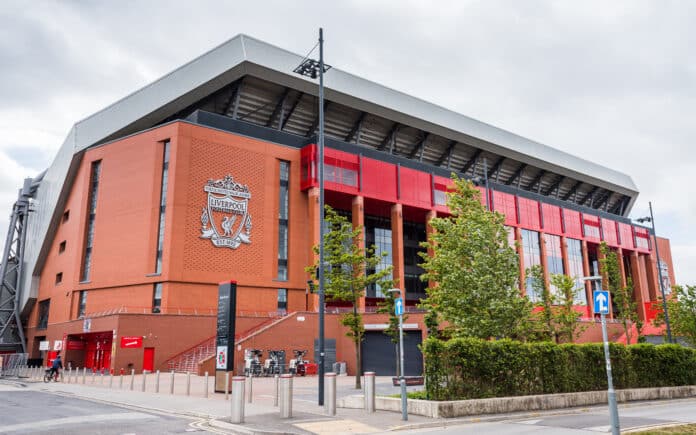In the pantheon of football’s greatest venues, Anfield stands as more than just a stadium—it’s the beating heart of Liverpool Football Club, a cultural landmark that has shaped the identity of both the team and the city for over a century. Like the unpredictable paths of a Plinko, the fortunes of matches played here have cascaded through history, creating moments of both triumph and heartbreak that resonate through generations.
The Historical Foundation
Origins and Evolution
Built in 1884, Anfield was originally home to Everton before becoming Liverpool FC’s fortress in 1892. The stadium’s evolution mirrors the club’s journey from humble beginnings to global powerhouse:
- 1884: Initial construction
- 1895: First major expansion
- 1928: Spion Kop construction
- 1994: All-seater conversion
- 2016: Main Stand expansion
The Legendary Kop
The Spion Kop, named after a hill where many Liverpool soldiers fell during the Boer War, has become synonymous with football’s most passionate supporters. This iconic stand:
- Houses 12,390 supporters
- Creates the famous Anfield atmosphere
- Serves as the spiritual home of the club’s most devoted fans
- Pioneered terrace culture in English football
Architectural and Atmospheric Elements
Physical Features
Anfield’s architecture combines historical elements with modern amenities:
- The Main Stand
- Capacity of 20,673
- State-of-the-art facilities
- Premium hospitality areas
- Stunning city views
- The Sir Kenny Dalglish Stand
- Modern family section
- Enhanced visibility
- Integrated technology
- Historical displays
The Famous Atmosphere
The stadium’s design creates a unique acoustic environment that amplifies the crowd’s energy:
- Steep stands that keep noise within
- Close proximity to the pitch
- Strategic speaker placement
- Natural sound reflection points
Cultural Impact and Traditions
You’ll Never Walk Alone
Perhaps no other element better represents Anfield’s soul than the pre-match rendition of “You’ll Never Walk Alone.” This tradition:
- Unifies supporters
- Intimidates opponents
- Creates emotional connections
- Transcends football
Match Day Rituals
Like the strategic placement of pins in a Plinko board, every element of an Anfield match day falls into a carefully orchestrated pattern:
- The walk up Anfield Road
- Touch of the “This Is Anfield” sign
- Pre-match songs and chants
- Post-match celebrations
Competitive Advantage
The “Twelfth Man” Effect
Statistics consistently show Anfield’s influence on match outcomes:
- Higher win percentage at home
- Increased goal-scoring rates
- Better comeback statistics
- Improved player performance
Memorable Moments
The stadium has hosted countless historic matches:
- 1965 European Cup victory
- 1977 European Cup final qualification
- 2019 Barcelona comeback
- 2020 Premier League trophy celebration
Modern Development and Future Vision
Recent Improvements
The stadium continues to evolve while maintaining its character:
- Expanded capacity to 61,000
- Enhanced facilities
- Improved accessibility
- Sustainable initiatives
Future Plans
Liverpool FC’s vision for Anfield includes:
- Further capacity increases
- Technology integration
- Fan experience improvements
- Community development projects
Community Integration
Local Impact
Anfield’s influence extends beyond match days:
- Economic benefits for local businesses
- Community outreach programs
- Cultural preservation efforts
- Educational initiatives
Global Reach
The stadium’s reputation attracts visitors worldwide:
- Stadium tours
- Museum experiences
- International events
- Cultural exchanges
Player and Manager Perspectives
The Professional Experience
Players and managers consistently speak of Anfield’s unique influence:
- Pre-match motivation
- Performance enhancement
- Career highlights
- Emotional connections
Opponent Viewpoints
Even rivals acknowledge Anfield’s special atmosphere:
- Respect for traditions
- Challenge of the environment
- Professional admiration
- Memorable experiences
Conclusion
Anfield’s influence on Liverpool Football Club transcends the typical relationship between a team and its stadium. Like the complex patterns of a Plinko game, each element of its identity—from the architecture to the atmosphere, from the traditions to the triumphs—has fallen into place to create something truly unique in world football.
The stadium continues to evolve while maintaining its core identity, balancing modern demands with historical preservation. As Liverpool FC moves forward, Anfield remains not just a venue but a living embodiment of the club’s values, history, and aspirations. It stands as a testament to the power of place in shaping sporting identity and cultural heritage, ensuring that future generations will continue to be inspired by the magic of this legendary ground.




